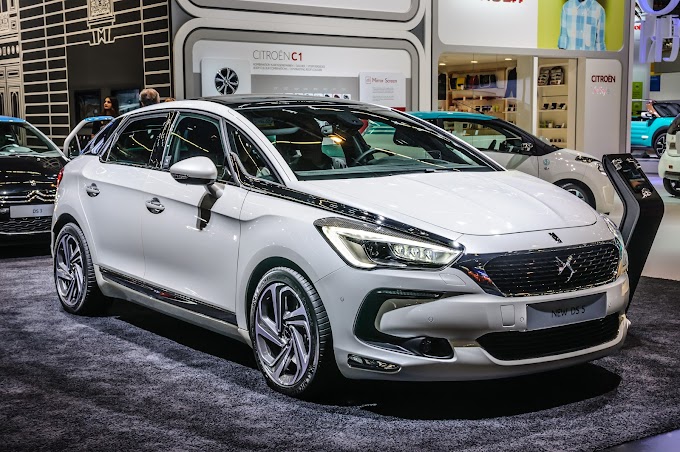How Frigid Temperatures Impact Car Batteries
%20(1).png)
Introduction to Frigid Temperatures and Car Batteries
- Car
batteries are crucial components of any vehicle, providing the necessary
power to start the engine and operate various electrical systems.
- When
temperatures drop significantly during the winter months, it can have a
detrimental effect on car batteries.
- Cold
weather affects a battery's ability to generate power due to the slowing
down of chemical reactions within the battery.
- As
the temperature decreases, the engine oil thickens, making it harder for
the engine to turn over, placing additional strain on the battery.
- Frigid
temperatures can also reduce the battery's overall capacity, meaning it
may not hold a charge as effectively or for as long.
- In
colder climates, drivers are more likely to experience difficulties
starting their vehicles in the morning due to the strain placed on the
battery by low temperatures.
- It's
essential for vehicle owners to be aware of how cold weather can impact
their car batteries and take preventative measures to avoid potential
issues.
- By
understanding the effects of frigid temperatures on car batteries, drivers
can implement strategies to prolong battery life and ensure reliable
vehicle operation during the winter season.
Understanding the Impact of Cold Weather on Car Batteries
- Cold
weather significantly affects the performance of car batteries.
- Lower
temperatures slow down the chemical reactions inside the battery, reducing
its ability to generate power.
- The
cold thickens the engine oil, making it harder for the engine to turn over
and putting a greater demand on the battery.
- In
extremely cold conditions, the battery's capacity can decrease by up to
50%, leading to difficulty starting the car.
- Batteries
with lower cold-cranking amps (CCA) ratings are particularly vulnerable to
cold weather issues.
- Car
batteries also lose charge more quickly in cold weather when not in use
due to the self-discharge rate being higher in lower temperatures.
- Regularly
using a battery charger or maintainer during the winter can help prevent
loss of charge and prolong the battery's lifespan.
- Extreme
cold can cause the battery to freeze, leading to irreversible damage.
- It
is crucial to have the battery tested before winter to ensure it is in
good condition to handle the cold weather demands.
- In
conclusion, understanding the impact of cold weather on car batteries is
essential for maintaining optimal battery performance during winter
months.
Symptoms of a Weak Battery in Cold Weather
- Slow
Engine Crank: In frigid temperatures, a common sign of a weak battery is
when the engine is slow to turn over when starting the car. The cold
weather causes the battery to produce less power, leading to difficulty in
cranking the engine.
- Dim
Lights: Another indication of a weak battery in cold weather is dim or
flickering headlights and interior lights. The reduced power output of the
battery struggles to maintain adequate lighting, signaling a potential
issue.
- Electrical
Malfunctions: Cold weather can exacerbate existing battery problems,
causing erratic behavior in electrical components such as power windows,
radio, or seat adjusters. These malfunctions can point to a weakening
battery struggling to power the vehicle's electrical systems.
- Warning
Lights: If the battery is struggling in cold weather, it may trigger
warning lights on the dashboard such as the battery light, check engine
light, or other indicators. Ignoring these warnings can lead to further
complications and potential breakdowns.
- Clicking
Sound: When attempting to start the car in freezing temperatures, a weak
battery may produce a rapid clicking sound. This noise indicates the
battery lacks the power to engage the starter motor effectively.
- Old
Battery: If the battery in the vehicle is several years old and
experiencing any of the above symptoms, it is likely the cold weather has
exposed its weakness. In such cases, replacing the battery may be
necessary to avoid unexpected failures in low temperatures.
Tips for Preventing Battery Issues in Frigid Temperatures
- 1.
Keep the Battery Warm: Parking the vehicle in a garage or using a battery blanket can
help maintain the battery's temperature above freezing, preventing it from
losing power in cold weather.
- 2.
Limit Short Trips: Avoid frequent short trips in cold weather, as these can drain
the battery without giving it enough time to recharge fully. Opt
for longer drives when possible.
- 3.
Check the Battery Regularly: Ensure the battery is in good condition by having it checked
regularly by a mechanic. This can help identify any issues before they
become major problems.
- 4.
Turn off Electronics: Minimize the use of electronics such as the heater, radio, and
lights when the engine is not running, as these can drain the battery
faster in cold temperatures.
- 5.
Use a Battery Charger: Consider investing in a battery charger to keep the battery
charged during periods of inactivity, especially in cold weather when the
battery is more likely to lose charge.
- 6.
Clean the Battery Terminals: Corrosion on the battery terminals can reduce the battery's
ability to hold a charge. Regularly clean the terminals to ensure a
good connection.
- 7.
Insulate the Battery: Adding insulation around the battery can help keep it warmer in
frigid temperatures, reducing the strain on the battery and prolonging its
lifespan.
By following these tips, car owners can
minimize the risk of battery issues during cold weather and keep their vehicles
running smoothly even in the coldest conditions.
Importance of Regular Maintenance and Inspections
- Regular
maintenance and inspections are crucial for ensuring the longevity and
optimal performance of car batteries.
- Through
routine checks, potential issues can be identified early on and addressed
before they escalate.
- Scheduled
maintenance, such as battery testing and cleaning, can help prevent
unexpected breakdowns, especially during extreme weather conditions like
frigid temperatures.
"Proper maintenance not only extends the
life of your car battery but also reduces the risk of being stranded in cold
weather due to a dead battery."
- Inspections
by professionals can detect any signs of corrosion or wear on the battery
terminals and cables, which can impede the battery's ability to function
efficiently.
- By
adhering to a regular maintenance schedule, car owners can also ensure
that their vehicle's electrical system is in proper working order,
preventing any strain on the battery.
- Neglecting
maintenance can lead to decreased battery life, increased risk of failure,
and potential safety hazards on the road.
"Investing in regular maintenance is a
proactive approach that can save both time and money in the long run by
avoiding costly repairs or replacements."
- Overall,
prioritizing regular maintenance and inspections for car batteries is
essential in preserving the reliability and performance of the vehicle,
especially in challenging weather conditions like freezing temperatures.
Effects on Battery Performance in Extreme Cold Conditions
- Extreme
cold temperatures can significantly impact the performance of car
batteries.
- When
the temperature drops, the chemical reactions within the battery slow
down, reducing its ability to generate power.
- Cold
weather causes the oil within the engine to thicken, making it harder for
the battery to start the vehicle.
- The
overall capacity of the battery decreases in cold weather, leading to
reduced power output.
- Vehicles
left idle in extremely cold conditions may struggle to start due to
decreased battery efficiency.
- Extreme
cold can cause the battery to freeze, damaging its internal components and
potentially rendering it unusable.
- It
is essential to regularly check the battery's health and have it tested
before winter sets in to prevent starting issues in cold weather.
- Using
a battery warmer or insulating the battery can help maintain its performance
in frigid temperatures.
- Keeping
the vehicle in a garage or using a battery trickle charger during cold
weather can help preserve the battery's lifespan.
- Regular
maintenance and taking precautions during extreme cold conditions can
extend the life of the battery and prevent unexpected failures.
Comparing Different Types of Car Batteries in Cold Climates
When it comes to cold climates, not all car
batteries are created equal. Here is a comparison of different types of car
batteries and how they fare in frigid temperatures:
- Conventional Lead-Acid Batteries:
- These
batteries are affordable but tend to struggle in extreme cold. The
electrolyte solution can freeze, causing the battery to lose its charge.
- Absorbent
Glass Mat (AGM) Batteries:
- AGM
batteries perform better in cold weather compared to conventional lead-acid
batteries. They have a higher resistance to freezing due to their design,
making them more reliable in frigid conditions.
- Gel Cell Batteries:
- Gel
cell batteries are another type that performs well in cold climates. They
are sealed and have a gel-like electrolyte, which prevents freezing and
allows for consistent performance in low temperatures.
- Lithium-Ion Batteries:
- While
lithium-ion batteries are known for their high performance and longevity,
they are not the best choice for extremely cold conditions. These
batteries may struggle to provide power in freezing temperatures.
To summarize, in cold climates, AGM and gel
cell batteries are more reliable options compared to conventional lead-acid
batteries. While lithium-ion batteries excel in many areas, they may not be the
most suitable choice for extremely cold environments. Consider the climate in
which you will be driving when choosing a car battery to ensure optimal
performance during winter months.
Common Misconceptions About Cold Weather and Car Batteries
- Misconception
1: Cold weather kills car batteries.
Contrary to popular belief, it is not the cold temperature that directly kills car batteries. In fact, extreme heat is more detrimental to battery life than cold weather. Cold temperatures can reduce the battery's capacity to deliver power, but proper maintenance and preparation can help mitigate this issue. - Misconception
2: Replacing a battery during winter is a must.
While it is true that batteries tend to fail more frequently in colder temperatures, a well-maintained and fully charged battery can still perform optimally in winter. Regular battery check-ups and maintenance can help prolong its lifespan even in cold weather conditions. - Misconception
3: Letting the car idle helps the battery in cold weather.
Leaving the car running idle in cold weather does not necessarily benefit the battery. In fact, idling the car for extended periods can be harmful to the engine and the environment. Using a battery warmer or trickle charger when the vehicle is not in use is a more effective way to maintain battery health in cold weather. - Misconception
4: Turning off accessories can prevent battery drain in winter.
While reducing the use of accessories such as heating systems and lights can help conserve battery power, the primary factor affecting battery performance in cold weather is its overall health and charge level. Ensuring the battery is well-maintained and fully charged is more crucial than simply minimizing accessory usage. - Misconception
5: Jump-starting a car is a permanent solution in winter.
Jump-starting a car in winter may provide a temporary solution to a dead battery, but it does not address the root cause of the issue. It is essential to diagnose the reason for the battery failure and take appropriate measures, such as recharging or replacing the battery, to prevent future breakdowns in cold weather.
Emergency Measures for Jump-Starting a Frozen Battery
- Use
a Portable Jump Starter: A portable jump starter is a handy tool to have in your vehicle
during winter. It can help you jump-start your car without needing another
vehicle.
- Warm
the Battery:
If the battery is frozen, try to warm it up by moving the vehicle to a
warmer location. You can also use a heat source, like a hairdryer or
heated blankets, to gently warm up the battery.
- Check
Battery Cables:
Ensure the battery cables are connected securely. If there is any
corrosion on the terminals, clean them using a wire brush to improve the
connection.
- Jump-Start
the Battery:
Once the battery is warmed up and the connections are secure, proceed with
jump-starting the car. Connect the jumper cables correctly - red to the
positive terminal and black to the negative terminal.
- Let
the Car Run:
After successfully jump-starting the car, let it run for at least 10-15
minutes to allow the battery to recharge.
- Drive
the Car: Take
the car for a drive to further charge the battery. This will also help in
melting any remaining ice or snow around the battery.
- Consider
a Battery Blanket: To prevent the battery from freezing in the future, you can
invest in a battery blanket. This electric heating pad wraps around the
battery and keeps it warm during cold weather.
By following these emergency measures, you can
effectively jump-start a frozen battery and get your vehicle running again in
frigid temperatures.
The Resilience of Car Batteries in Frigid Temperatures
Car batteries have proven to be remarkably
resilient in frigid temperatures, thanks to advancements in technology and design.
Despite the challenges posed by cold weather, modern car batteries are better
equipped to withstand the harsh conditions than their predecessors.
- Improved
Cold Cranking Amps (CCA): With higher CCA ratings, newer car batteries can provide the
necessary power to start a vehicle even in extremely cold weather. This
feature has been instrumental in ensuring that drivers are not left
stranded due to a dead battery in winter.
- Enhanced
Materials: Manufacturers
now use advanced materials that are more resistant to temperature
extremes, allowing car batteries to maintain their performance even in
freezing conditions. These materials help prevent issues such as freezing
or damage to the internal components of the battery.
- Smart
Battery Management: Some car batteries are equipped with smart technology that
helps manage their performance based on the surrounding temperatures. This
feature optimizes the battery's output and prolongs its life, even in cold
weather environments.
- Regular
Maintenance: While
car batteries are designed to be resilient in frigid temperatures, proper
maintenance is still essential to ensure their longevity. Regular checks,
such as testing the battery's charge and cleaning the terminals, can help
prevent problems before they arise.
Overall, the resilience of car batteries in
frigid temperatures emphasizes the importance of investing in a high-quality
battery that is equipped to handle the challenges of winter. By understanding
the factors that contribute to a battery's performance in cold weather, drivers
can take proactive steps to ensure their vehicle starts reliably, even on the
coldest of days.

.png)

.png)
.png)
.png)
.png)
